In your daily search for musical information you’ve probably come across a “lick of the day,” various short musical excerpts from world famous jazz solos that are neatly written out…
These brief phrases from the likes of Charlie Parker to Roy Hargrove seem to hold the musical secrets you’ve been seeking out for years – and there they are, right in front of you on the page.
However, once you get into the practice room something strange happens. Rather than the moment of musical enlightenment you were expecting, you end up with a bunch of memorized notes & chords that don’t seem to change your day to day playing a bit.
…well that’s just great!
Deep down you know there’s valuable musical information in this musical excerpt, the only problem is, you’re not getting it.
So here’s the big question: How should you approach a musical line or lick to get the most benefit in your playing?
In this lesson we’re going to show you how to fix this common problem once with a simple process for unlocking the hidden techniques in any line.
And to demonstrate we’ll use a short line from Joe Henderson’s solo on Homestretch on the album Blue Bossa:
Here is the specific line we’ll focus on today :
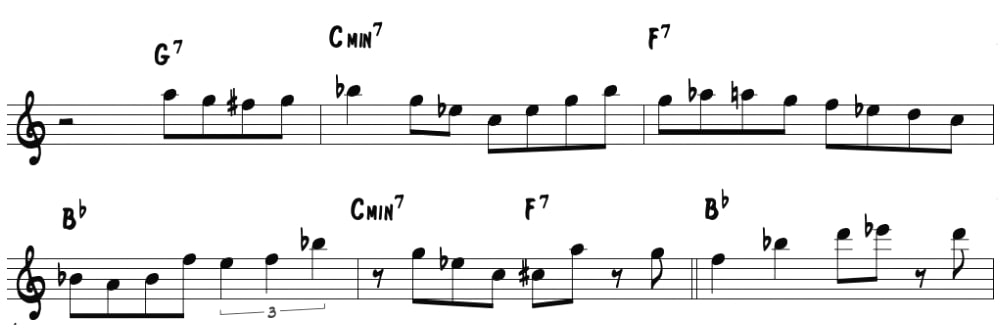
Below are 5 easy steps to unlocking, understanding, and mastering any jazz line you encounter…
1) Find the musical Context

When it comes to understanding an improvised phrase or a melody, context is everything.
You see, when we start with an unfamiliar lick on a piece of paper there are a lot of unknowns…
- What is the tune?
- What is the overall key?
- What is the larger progression?
- What does it sound like?
- What is happening in the solo before and after this line?
Ignoring or guessing at these details can quickly lead us astray. It’s like taking one tiny quote from a long speech, without details and context you can get the completely wrong impression.
To fix this you not only need to listen to the line, you also need to study the solo and tune that it was taken from. Here are 3 “big picture” questions to ask about your line:
What is the form of the tune?
Go back and listen to the original recording…
Can you hear a clearly defined form? What is the meter and how many bars are there? Is there a B section? Is this an established song form or an original? Do you recognize the tune?
A good way to go about figuring out the basic framework is to listen to the melody:

From the harmonic progression and melodic phrasing we can determine that this Joe Henderson line occurs in a 12 Bar Blues, and this is our first piece of musical context for our line.
Where does this line happen in the song form?
In addition to the form as a whole we also want to figure out exactly where this musical excerpt occurs in the progression.
In this case, Henderson plays the phrase over the last 4 bars of a blues, leading back to the top of the next chorus:
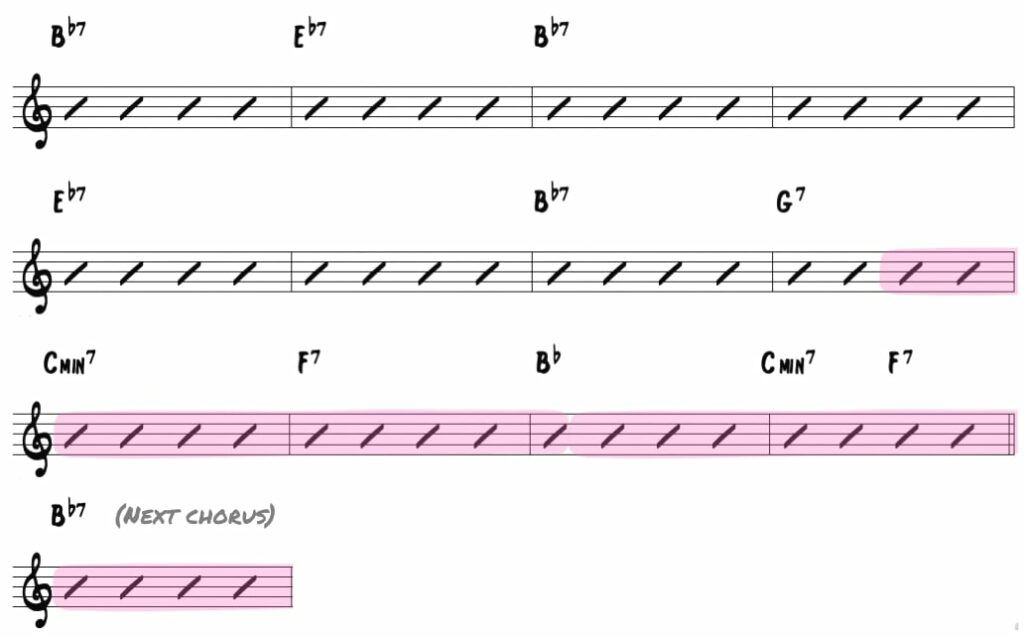
What happens before and after this line?
Think about this line within context of the entire solo and how it is part of a larger musical story. Specifically, what comes directly before and after this phrase?
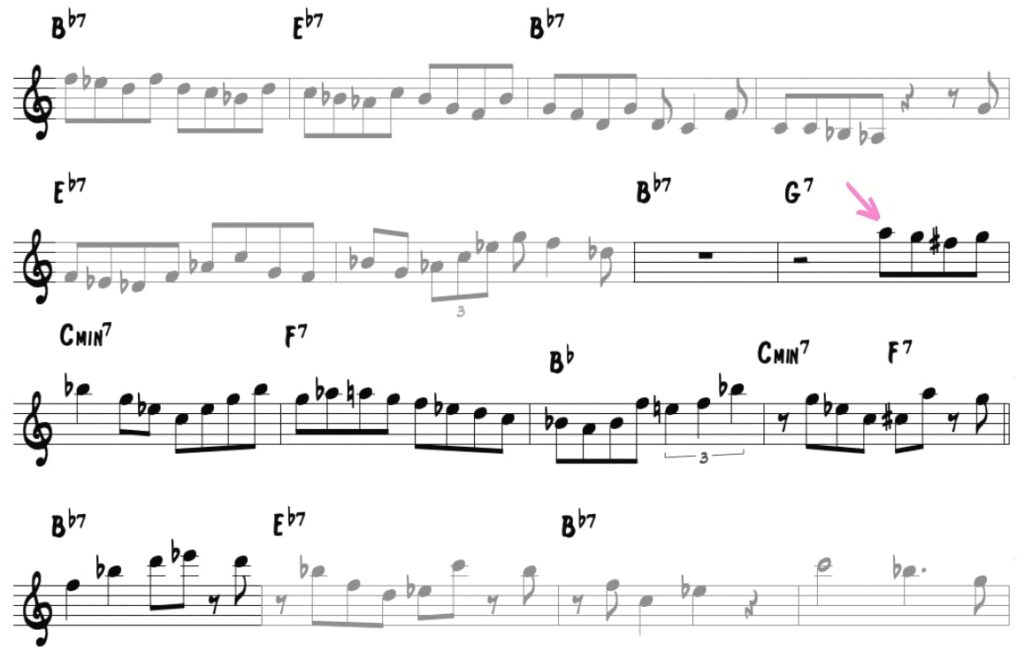
This will put the line in the context of a longer solo and will give you some more clues about the soloist’s musical choices – was this at the beginning of a solo, at the conclusion, in a development section, etc.
2) Get specific with the Chords

The next step is all about getting into the details of the specific chords and progression that are happening under the melodic line.
One of the traps that we fall into when we see a lick on paper is that we often take the written chord symbols at face value rather than exploring how they work in the bigger chord progression.
For instance, you don’t just want to memorize a C- chord and leave it at that. You want to know the function of this chord in the harmony and how it relates to the tune as a whole.
Is it a iii chord, a vi chord, a ii chord, etc.? How exactly does it function in the key and larger progression?
Begin by identifying a home key, the specific chords under the line, and do a harmonic analysis – this should be easier after after you’ve identified the form.
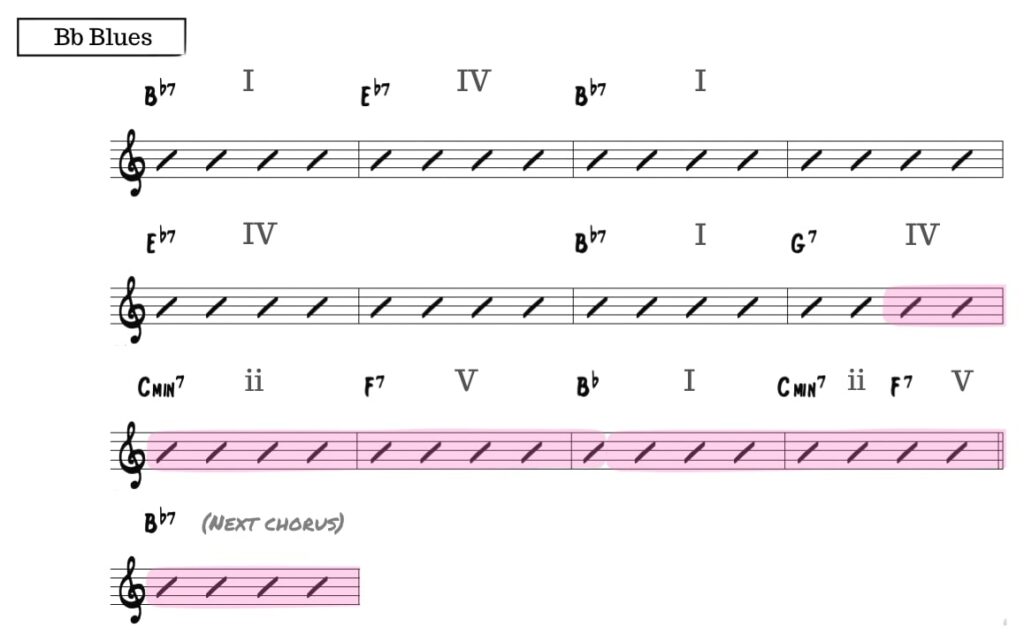
Here you can see the line is played over the ii-V-I progression in the last four bars of a blues. The C- is the ii chord in the larger key of Bb, and this ii-V-I (and shorter ii-V) happens at the end of the form and leads into the next chorus.
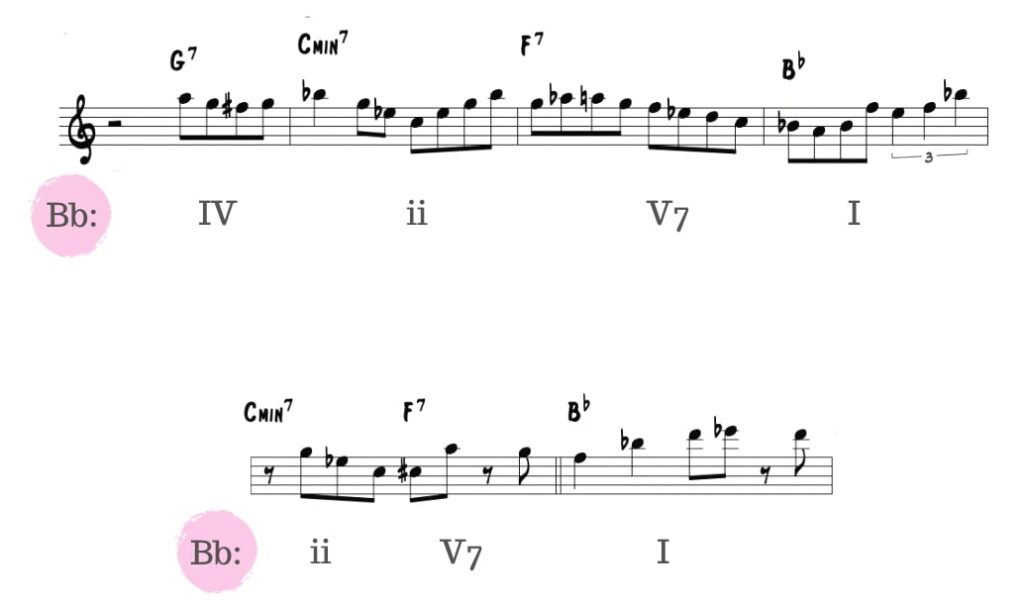
Now you are seeing the music in relation to the key of Bb and the specific harmonic progression in the blues form. ..
If you want to quickly build your skills with harmonic function and other aspects of jazz harmony, check out our newest course Jazz Theory Unlocked:

*If the song isn’t a well known tune or has a unique form, listen for a larger key center or arrival points in the form and then analyze what you have. Write out the bars and meter and notate the chords as best you can, establishing a rough framework.
3) Analyze the Chord Tones
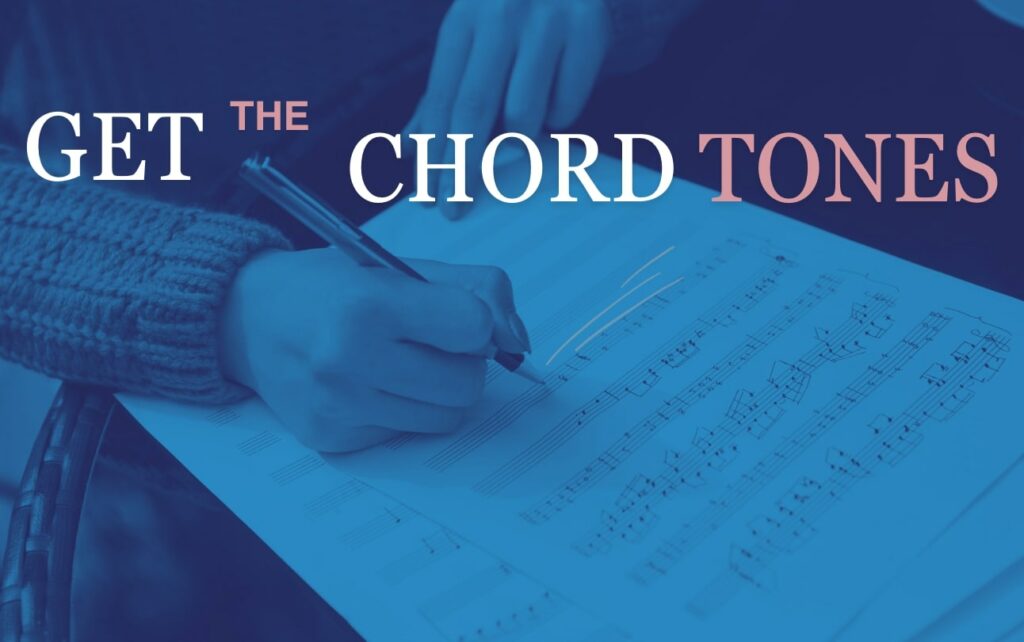
Now, in step #3 we’ll look at exactly how this line or melody relates to the underlying harmony…
Look at the melodic content of the line, ask yourself: Which specific chord tones are used and which non-diatonic notes are used?
A useful exercise is to simplify the line into its “essential” notes vs. the extra or modifying notes. In essence, reducing the line down to a melodic skeleton…
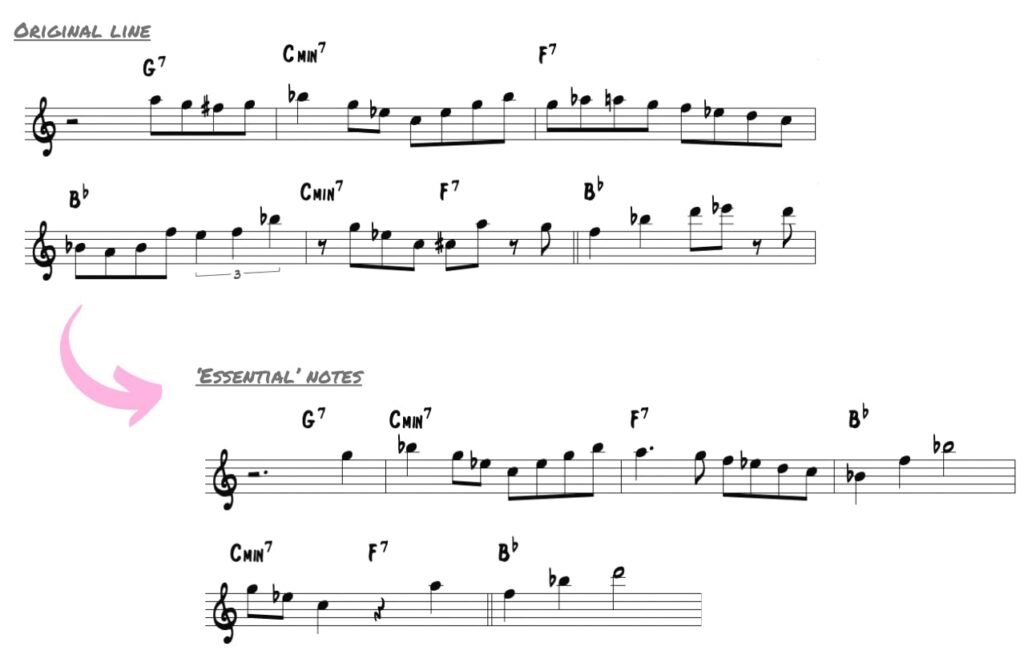
You can see that the skeleton of the line is surprisingly simple and built on fundamentals – the basic triads, roots, 3rds, 5ths, and logical resolutions, etc.
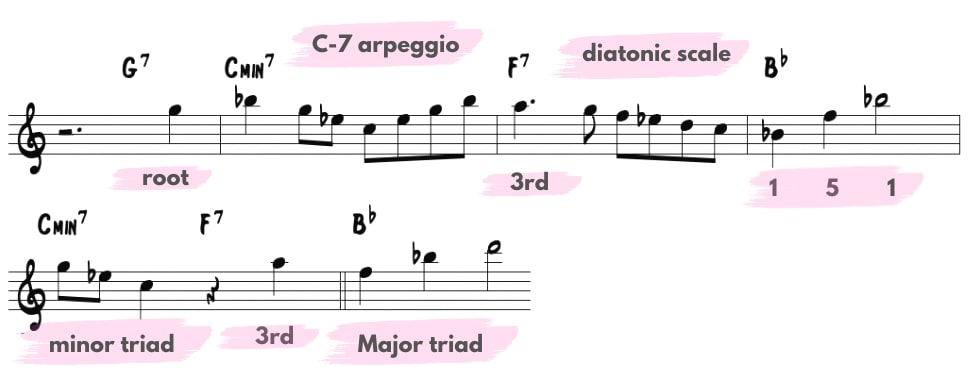
And this is a good entry point for conceptualizing the basic ideas in the line, especially as you practice them in other keys.
Next, take a look at the “modifying notes” that are used alongside the chord tones and start to think about how they are used in relation the melody and chords:
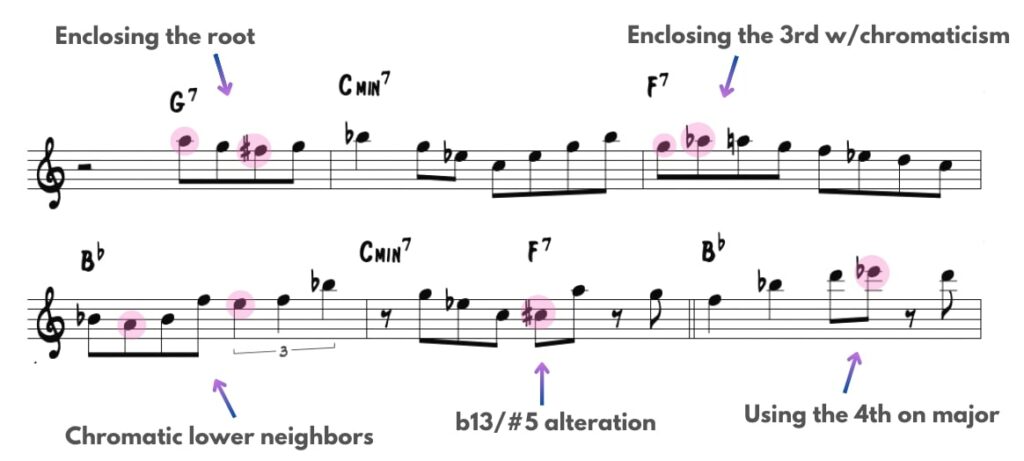
This process will give you insight into the musical techniques we’ll focus on in the next step…
4) Identify Musical Techniques

With the form, harmony, and exact note choices identified, it’s time to identify the specific musical techniques that you can isolate and apply to your own playing.
Start by thinking about the general melodic contour or defining characteristics of the excerpt. What broad ideas or qualities can you take from the line? Are there any spots that stand out to you?
Consider the intervals, alterations, rhythms, arpeggios, or chromaticism and how these musical devices are employed. Every detail, no matter how small, can be useful…
4 Techniques from Joe Henderson’s line
Looking at these six bars of music within the context of the larger tune and progression, we can start to identify some techniques:
1. Utilizing triads & arpeggios
Much of Henderson’s line is built around triads and strong chord tones, especially on the C- and Bb chords. Notice how he “ornaments” the basic triad with chromatic lower neighbors on this Bb chord:
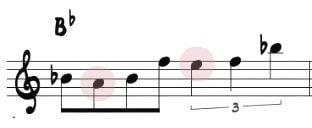
And utilizes the 4th with a major triad at the end of the phrase:
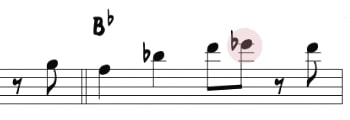
With a few modifying notes and rhythmic direction, the basic root, 3rd, and 5th of any chord can become a compelling statement.
2. Enclosures
Enclosure is an essential part of linear development in the bebop tradition, and in this line you’ll find two examples of it.
Over the G7 chord, Henderson encloses the root of the chord with an upper and lower neighbor, serving as a pick-up into the phrase…
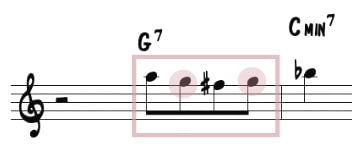
And the moving from the C- to F7, he encloses (A) the 3rd of F7…
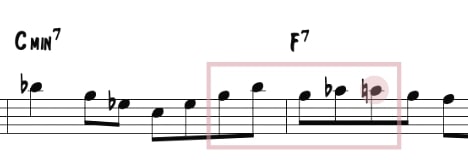
3. V7 alterations
Dominant alterations are an essential part of any improvisers vocabulary, and here Henderson emphasizes the sound of the b13 on the F7 chord:

This is a common bebop technique and the sound also implies the V7 of iii or passing diminished chord moving to D- (related to Bb).
4. ii-V language and techniques
The ability to navigate ii-V progressions is another essential skill for improvisers and there are two great examples in this excerpt to learn from.
The first is a 2 measure ii-V leading to the I chord:

And the second is a 1 measure ii-V in the last measure of the form:
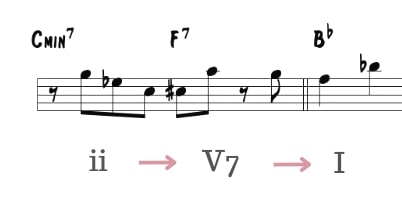
Notice how he uses different techniques for each – the longer ii-V allows for more linear material while the shorter uses an abbreviated idea.
Also look at the way rhythm and phrasing is used in the phrase along with an approach to swinging and the flow of 8th notes. These are all techniques that you can extract from this line and practice separately and eventually use in all aspects of your improvising.
…and make sure to make note of your own observations, what do YOU hear in the music that you want to absorb?
5) Simplify, ingrain, & Vary
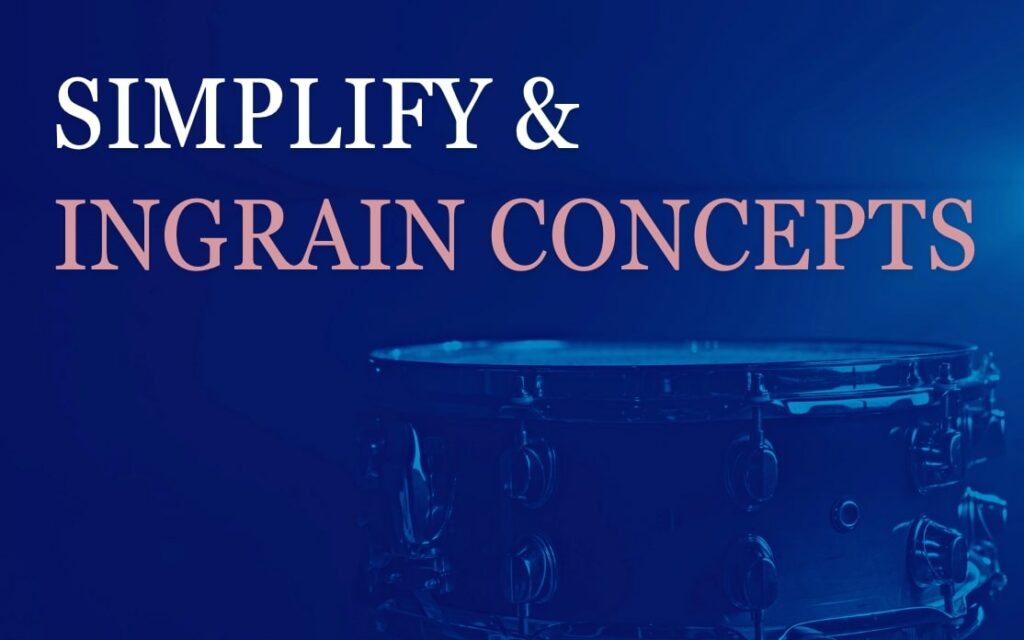
In this final step it’s all about ingraining the individual techniques into your playing and putting the entire line back together.
Isolate and practice these devices or ideas in all keys within the context of a related chord or progression.
As you begin to practice these techniques in all keys it’s useful to start with simplified framework – will make it easier to visualize and transfer to new keys Here are few ideas about how you might approach this in the practice room:
You might begin with the major triad plus 4 concept. Simplify it to a root position triad with the 4th on top and learn it in all keys, take it around the cycle.

Then take the exact phrase with the triad + 4 from the original line and learn that in all keys around the cycle:

Or maybe you might focus on the one bar ii-V with b13 of V7…Again simplify the musical concept and ingrain it in all keys. You might start by visualizing the b13 on every V7 chord:

And eventually you’ll get to the ii-V in the solo, which you’ll also learn in all keys:

Along the way with this process, you’ll be extracting specific pieces of language and musical concepts – working out simplified fragments in all keys and then making them more complex until you’ve ingrained the original line.
And this will lead to mastery of the musical concepts behind the line that you’ll have in your musical toolbox for any solo you take. Eventually you should be able to play the entire line with a newfound awareness of each individual tactics contained within it:
And this is the goal…from one line you’ve extracted a wealth of musical information that you can now apply to any musical situation!










